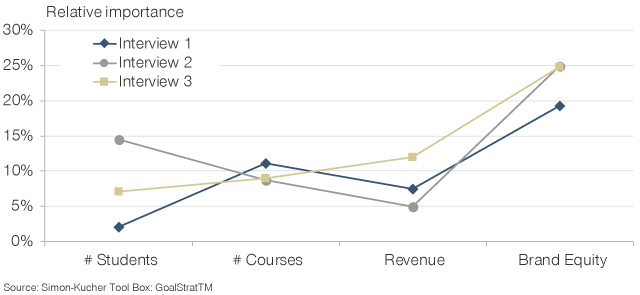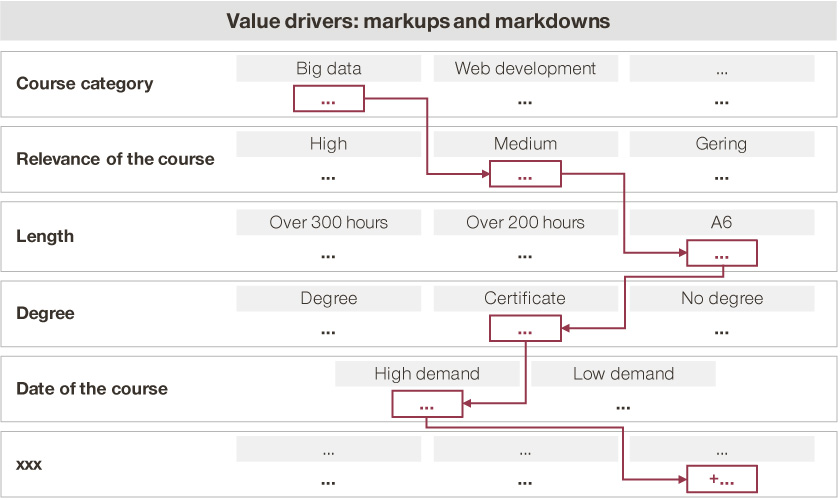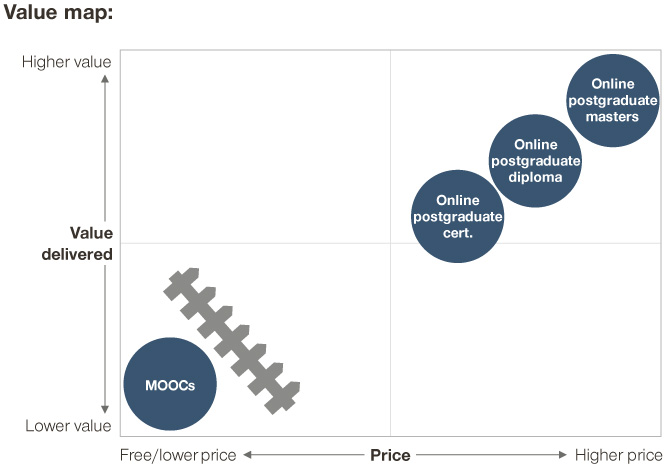The COVID-19 pandemic has not spared education providers, who have to deal with unexpected challenges in linking with students. This accelerates an already existing trend in the field toward online education and e-learning. As technical solutions are being deployed, the time is right to shift the focus on value extraction.
The COVID-19 pandemic has forced us to change the way we interact. With schools being temporarily closed, home schooling or distance learning are challenges that many students and parents have to face time and again. While challenging, the need to physically distance has also created a historic opportunity for education providers: People are educating themselves digitally at home on an unprecedented scale, and many schools and universities are creating e-learning opportunities to meet the growing demand for digitally-supported learning content.
COVID-19: E-learning becomes more important than it already was
This has accelerated a general market trend in the education sector related to e-learning and monetization. Studies conducted before the global spread of the pandemic already indicated this: For example, a survey by the mmb Institut named as the three most important trends in the German-speaking education sector video-based learning, social media services, and optimized payment formats.
Education providers have focused their efforts since the beginning of the pandemic on making necessary technical improvements and getting their content online quickly. Even after schools will open up again, it would be unwise to simply retire these new education platforms. However, the question will be how to put them to their most efficient use. This contains the challenge of how to secure sustainable success through reliable monetization – now is the time to shift attention to the value that the contents offer, monetize it fairly, harmonize the product offering, and develop new business models where necessary – turning to monetization and pricing.
3 key steps for reaching e-learning’s full potential
Based on our project experience and insights into the education sector in the last decade, we have identified three key steps that education providers need to take when trying to leverage the potential of e-learning offerings to their fullest:
1. Find the ideal online monetization strategy:
The pandemic made it necessary to develop online education offerings really quickly. To avoid a step back once current restrictions are lifted, a major goal has to be to find ways to monetize them effectively. In order to do so, education providers have to develop their e-learning services according to the wishes and requirements of their target segments. A clever monetization strategy starts with developing a solid strategy and positioning for the general offering – this then defines the exact shape of the product offered. To achieve this, it is key to know the answers to the following questions:
- What do you want to achieve with your offer (e.g. new users, new content, new sales channels)?
- Who do you want to reach (e.g. enrolled students, interested parties)?
- How do you structure your offering (e.g. core content vs upsell paths such as certificates, tutorials or communities)?
- Should the offer generally be fee-based, and if so, who pays (e.g. user vs payer)?

Example: The Simon-Kucher GoalStratTM exercise can uncover differing goals of a monetization strategy by asking decision makers for clear trade-offs and choices.
Based on the answers, education providers are then able to define their online strategy, as well as identify the relevance of monetizing e-learning contents and upsell paths to specific target groups for value capture.
2. Optimize your offer structure and pricing:
Once a monetization strategy is clear, e-learning offers need to be detailed out to fit that strategy. For this, every component of the offer needs to be assessed in detail by taking a look at its costs and then identifying as well as ranking those elements that are most valuable to your target group and for which they are willing to pay more – so-called value drivers.
Key questions to ask when defining the specific offer structure and pricing are:
- Do your offers address all relevant target groups?
- Which offer structure and features optimally monetize the value of your product?
- Which prices reflect the product value from the user’s or customer’s perspective?
- Which aspects of behavioral economics should be considered when designing the offer communication?

Example: Starting with the core product and base price identified in market research (e.g. via Simon-Kucher ExpertPricer), all final products can be derived from building a systematic, consistent and value-based assortment and pricing logic.
Taking into consideration the answers to these questions, education providers can productively discuss product and bundle details as well as segments’ willingness to pay, in order to get to a relative price-performance positioning based on own competitive advantages.
3. Integrate e-learning into your overall portfolio:
To avoid cannibalization of the existing offering once restrictions are gradually lifted, it is essential to carefully integrate new e-learning services into the overall product portfolio: it is important to determine how other offers influence e-learning and how e-learning influences the rest of the portfolio. Answers are needed on:
- Is there a clear distinction between e.g. free and entry-level products?
- What cannibalization effect do online offers have?
- Have roles and KPIs been clearly defined to achieve strategic goals (see step 1)?

Example: It is critically important to ensure there is a clear fence between what is offered online and what is other paid-for content.
With this information, e-learning can be positioned in the overall portfolio covering potential white spots and warding off negative influences on existing products.
Conclusion: A clever strategy is key to ensure success
While the last year saw many technical and platform improvements around e-learning, many education providers still struggle when it comes to commercial strategies around monetization, offer and price structure, and portfolio optimization. This challenge is becoming graver in a dynamic market environment, as currently being created by the global COVID-19 crisis and its effect on online offerings. In order to ensure sustainable success, education providers now have to refine their e-learning strategies by setting clear monetization strategies, optimizing their offer structure and pricing model, and integrating the new offering into their overall portfolio.








